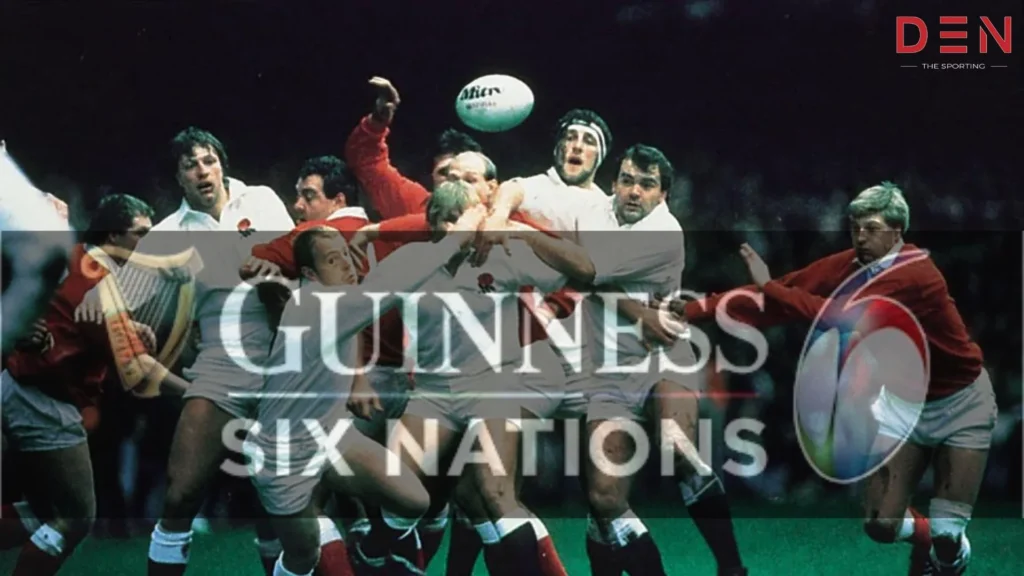
The Six Nations Rugby Championship, a symbol of European sporting pride, embodies the dynamic Evolution of Six Nations, pulsating as a living entity. Adapting through eras, it mirrors rugby’s evolution and the cultural shifts of its constituent nations. Let’s embark on its remarkable journey, unraveling the transition from traditional roots to the embrace of modern challenges.
The Evolution of Six Nations: Tradition, Transformation, and the Future
In The Evolution of Six Nations, witness the seamless blend of tradition and modernity as rugby’s dynamic evolution unfolds. From the tournament’s historic roots to the contemporary challenges it navigates, the Six Nations continues to shape the future of European rugby with a commitment to fierce competition, unwavering passion, and a shared love for the beautiful game.
Born from Rivalry: The Brutal Genesis in 1883
In 1883, the inaugural “Home Nations Championship” showcased England, Scotland, Ireland, and Wales in the world’s first international rugby union competition. Amidst muddy fields, a rugged exhibition ensued, driven by territorial pride, igniting enduring rivalries that still thrill audiences in the tournament today
Expanding Horizons: France’s Elegant Inclusion in 1910
France joined in 1910, morphing the competition into the “Five Nations.” The elegant French flair complemented traditional grit, introducing a newfound tactical nuance. World Wars caused temporary halts, but the tournament’s resilience stood as a testament to the sport’s enduring spirit.
Evolution of Six Nations: Italy’s Entry in 1999 and the Birth of the Six Nations
In 1999, Italy’s arrival marked the birth of the modern Six Nations. This expansion brought diverse perspectives and playing styles, enriching the tournament’s tapestry. The coveted “Grand Slam,” winning all five matches, became the ultimate accolade, testing true dominance.
Professionalism’s Rise: The Turn of the Millennium
The onset of the millennium marked the dawn of professional rugby. Television contracts skyrocketed, player wages surged, and the sport evolved into a thrilling spectacle. Though traditionalists lamented the departure from amateurism, it unquestionably heightened the Six Nations’ worldwide allure.
Technological Advancements: Shaping a New Era
Technology played a transformative role. Video TMOs ensured fair officiating, and advanced training methods optimized performance. Social media brought fans closer, fostering a global community that transcends national borders.
Modern Challenges: Navigating Choppy Waters in the 21st Century
Yet, the Six Nations faces contemporary challenges. Player welfare concerns, especially regarding head injuries and demanding schedules, demand urgent attention. Financial disparities between richer and poorer unions threaten competitive balance, and the shadow of talent poaching from wealthier leagues looms large.
The Evolution of Six Nations: Embracing the Future with Emerging Talents
Despite challenges, the Six Nations’ future shines bright. Young talents like England’s Marcus Smith and Wales’ Louis Rees-Zammit inject youthful exuberance. The continued evolution of attacking rugby, exemplified by teams like Ireland with dazzling running plays, keeps fans on the edge of their seats.
FAQs
Originally formed as the Home Nations Championship in 1883, the competition has blossomed over the years and became its current format in 2000 when Italy joined the Five Nations.
The Championship rankings are determined as such:
The Union accumulating the greatest number of Match Points will secure the top position, with the remaining Unions arranged in descending order based on their respective Match Points.
Chiefly because it was held between the 4 home nation countries; England, Ireland, Scotland and Wales. France joined the championship in 1910 to make it the 5 nations. This is how the tournament remained until Italy joined in the year 2000.
Suggested Read: Six Nations 2024 Winner Prediction: Analyzing the Front-Runners
Summing it Up
The narrative of Evolution of Six Nations encapsulates a captivating tale blending tradition and change, mirroring the sport’s growth alongside its member nations’ evolving landscapes. As the tournament progresses, it must maintain its fundamental principles: intense competition, undying fervor, and a collective adoration for the sport. In doing so, the Six Nations can continue to enthrall global audiences, showcasing sport’s timeless ability to unify and motivate.




